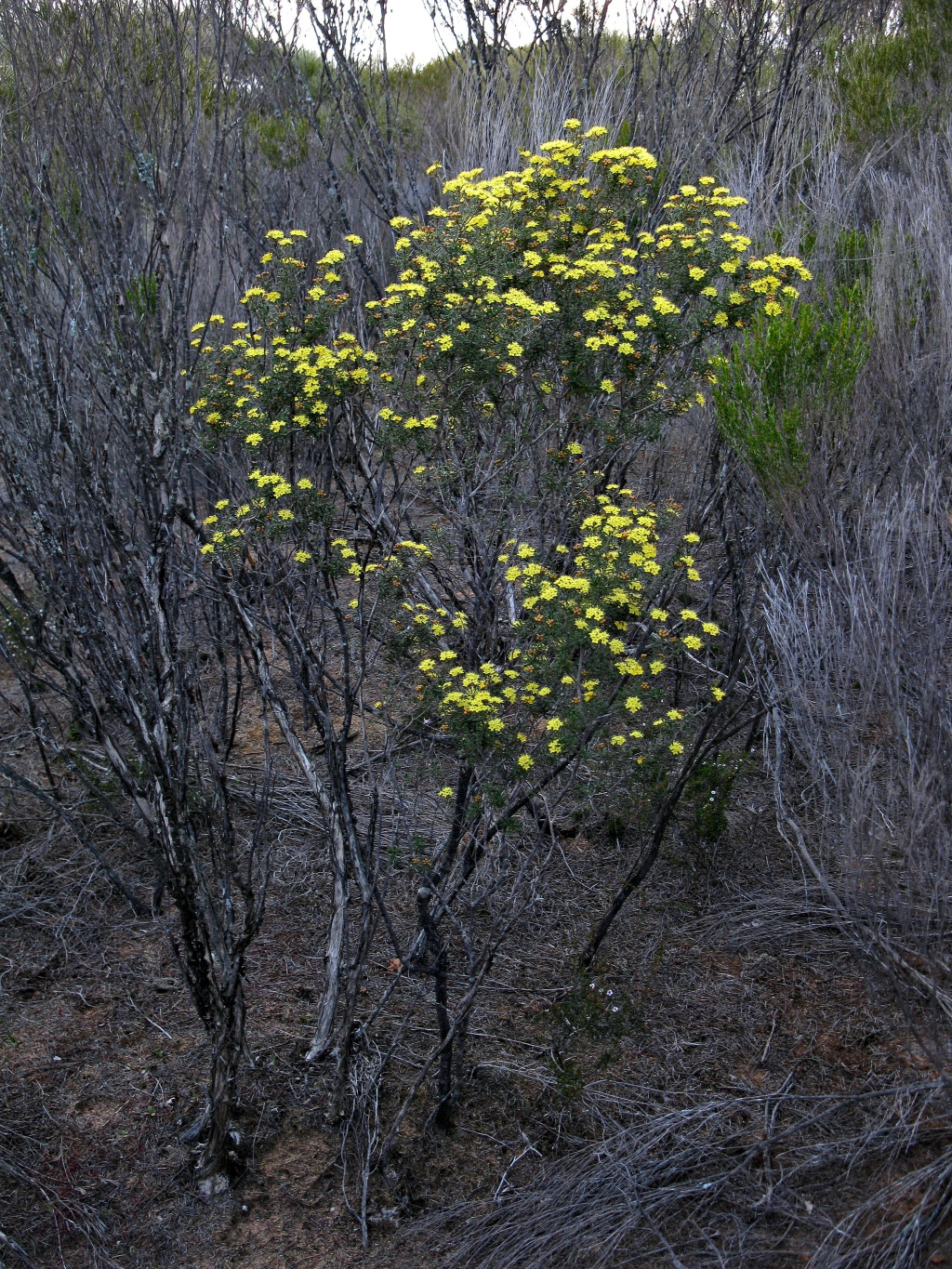Phebalium bullatum
J.M.Black Silvery PhebaliumShrub to 2 m high; branchlets terete, sparsely glandular-verrucose, silvery- to ferruginous-lepidote. Leaves narrowly oblong-obcuneate, 4–15 mm long, 1–2.5 mm wide, thick, V-shaped in cross-section, upper surface glabrous, green, with midrib indented, lower surface densely silvery-lepidote, margin glandular and undulate; petiole 1–2 mm long. Inflorescence a terminal, (1–)5–10-flowered umbel-like cluster; peduncle absent; pedicels 3–9 mm long. Calyx c. hemispherical, shallowly lobed, 1–1.5 mm long, glandular-verrucose, densely silvery- or ferruginous-lepidote; petals imbricate, broadly elliptic, 3–4 mm long, yellow, silvery- to ferruginous-lepidote outside; stamens exserted, anthers yellow; disc not apparent; ovary lepidote. Follicles erect, lepidote, apex rounded, c. 3 mm high. Flowers spring (rarely winter).
LoM, MuM, Wim, RobP, GGr. Also SA. Locally common in north-western Victoria in open mallee woodland on sandstone, sandy soil, or deep sand.
Duretto, M.F. (1999). Rutaceae. In: Walsh, N.G.; Entwisle, T.J., Flora of Victoria Vol. 4, Cornaceae to Asteraceae, pp. 153–197. Inkata Press, Melbourne.
 Spinning
Spinning


